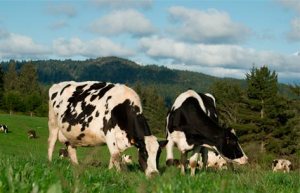Organic vs. non-organic is not only an issue of antibiotics, synthetic hormones, toxic pesticides, or GMOs… but nutrition as well!
Important differences really do exist within their nutrient profiles, as shown by an international team of experts led by Newcastle University, UK, in the largest systematic reviews of their kind.
 KEY FINDINGS* [via news release]:
KEY FINDINGS* [via news release]:
● Organic milk and meat both contain around 50% more beneficial omega-3 fatty acids than conventionally produced [non-organic] products
● Organic meat had slightly lower concentrations of two saturated fats (myristic and palmitic acid) that are linked to an increased risk of cardiovascular disease
● Organic milk contains 40% more conjugated linoleic acid (CLA)
● Organic milk contains slightly higher concentrations of iron, Vitamin E and some carotenoids
● Conventional [non-organic] milk contained 74% more of the essential mineral iodine and slightly more selenium
*Further explanation, including why such differences would matter to disease risk, is provided via the Newcastle University news release as well.
Professor Leifert adds: “We need substantially more, well designed studies and surveys before we can accurately estimate composition differences in meat from different farm animals and for many nutritionally important compounds (vitamins, minerals, toxic metal and pesticide residues), as there is currently too little data…”
 -Love Natural, Love Organic Image Source: Chemfree[.com]
-Love Natural, Love Organic Image Source: Chemfree[.com]
-Image of cows from the OrganicValley organic milk co. site [featuring Holsteins from the Petersen’s Farm in Humboldt County, California].



Yup. And we do goat milk here. The protein’s more like human milk in size and composition.
Wonderful, HW!:)